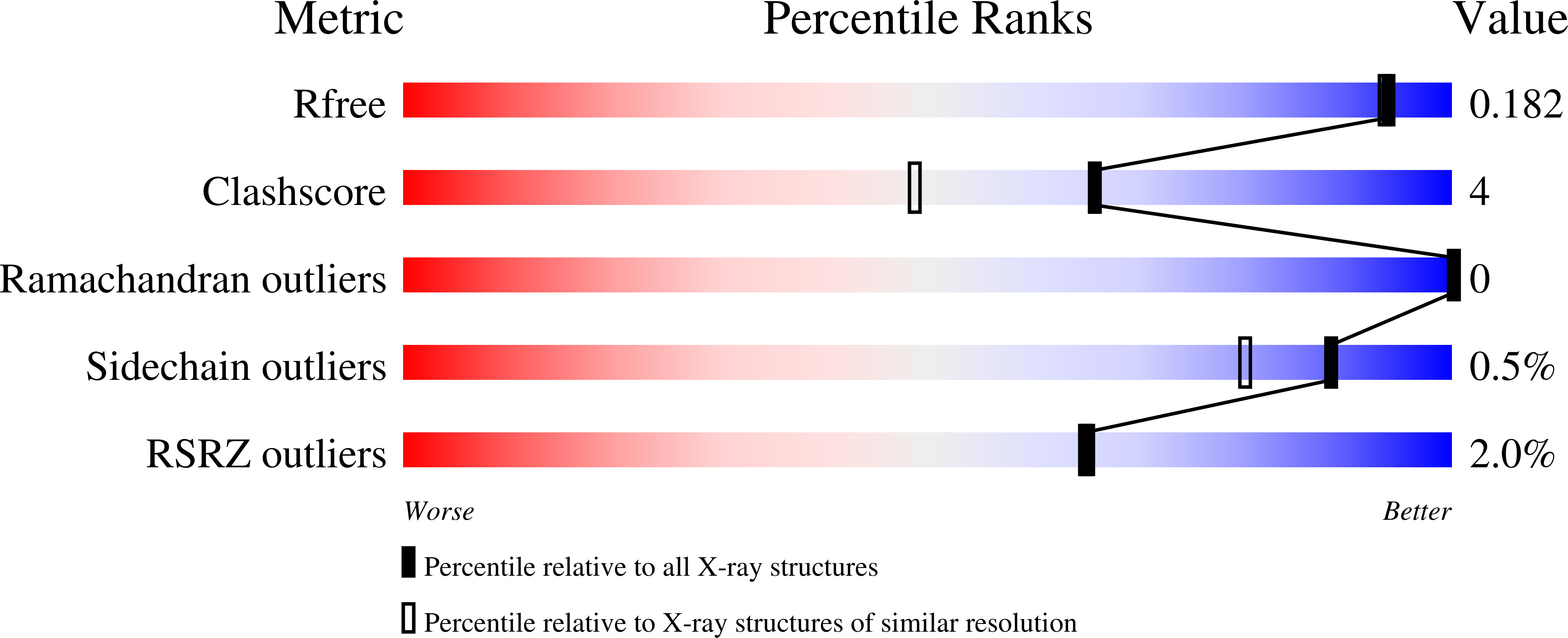Berberine bridge enzyme catalyzes the six electron oxidation of (S)-reticuline to dehydroscoulerine.
Winkler, A., Puhl, M., Weber, H., Kutchan, T.M., Gruber, K., Macheroux, P.(2009) Phytochemistry 70: 1092-1097
- PubMed: 19570558
- DOI: https://doi.org/10.1016/j.phytochem.2009.06.005
- Primary Citation of Related Structures:
3GSY - PubMed Abstract:
Berberine bridge enzyme catalyzes the stereospecific oxidation and carbon-carbon bond formation of (S)-reticuline to (S)-scoulerine. In addition to this type of reactivity the enzyme can further oxidize (S)-scoulerine to the deeply red protoberberine alkaloid dehydroscoulerine albeit with a much lower rate of conversion. In the course of the four electron oxidation, no dihydroprotoberberine species intermediate was detectable suggesting that the second oxidation step leading to aromatization proceeds at a much faster rate. Performing the reaction in the presence of oxygen and under anoxic conditions did not affect the kinetics of the overall reaction suggesting no strict requirement for oxygen in the oxidation of the unstable dihydroprotoberberine intermediate. In addition to the kinetic characterization of this reaction we also present a structure of the enzyme in complex with the fully oxidized product. Combined with information available for the binding modes of (S)-reticuline and (S)-scoulerine a possible mechanism for the additional oxidation is presented. This is compared to previous reports of enzymes ((S)-tetrahydroprotoberberine oxidase and canadine oxidase) showing a similar type of reactivity in different plant species.
Organizational Affiliation:
Institute of Biochemistry, Graz University of Technology, Petersgasse 12/II, 8010 Graz, Austria.



















